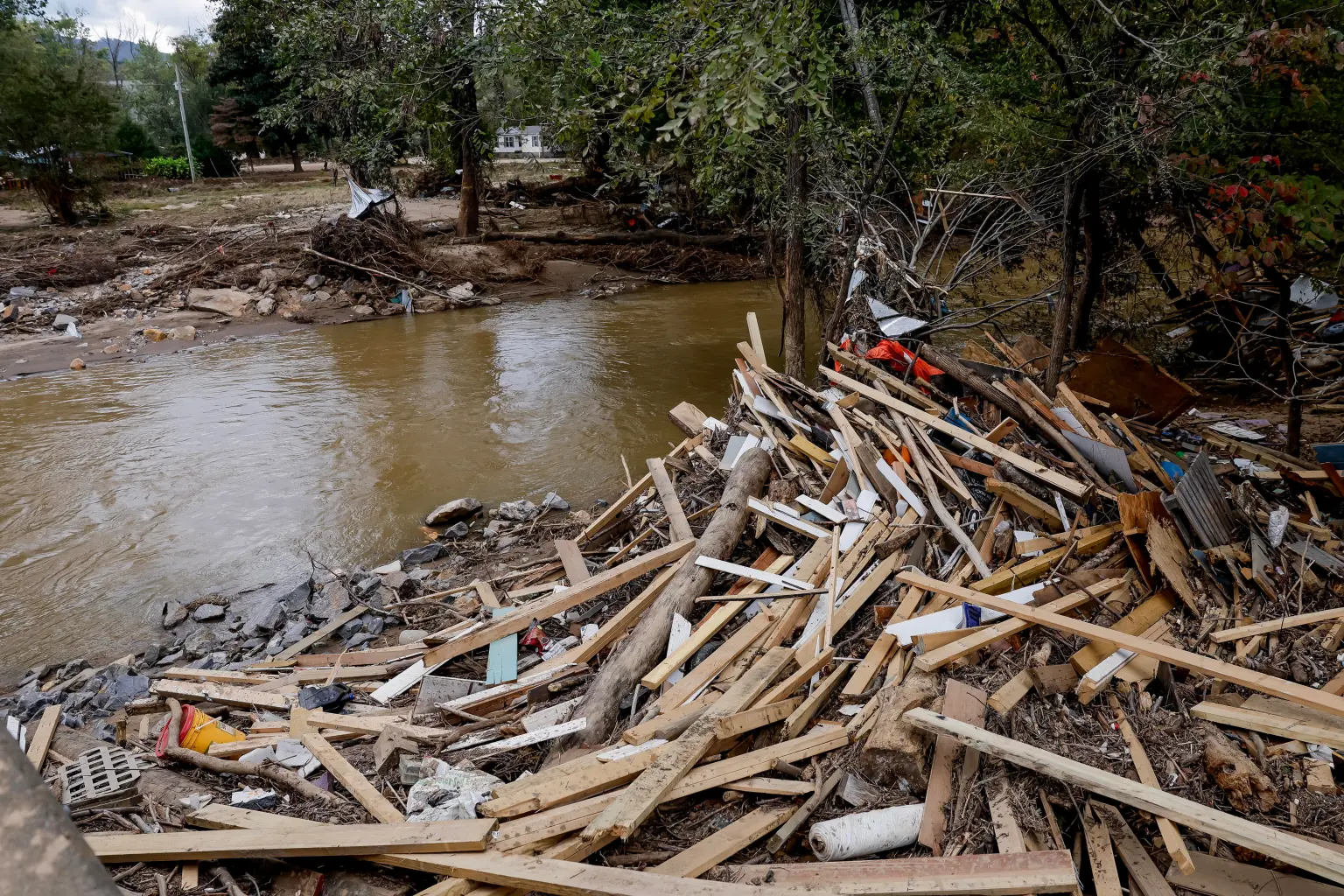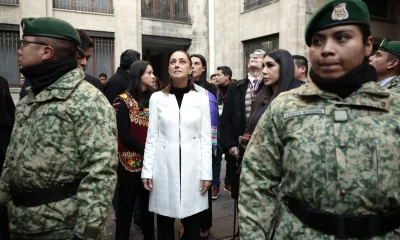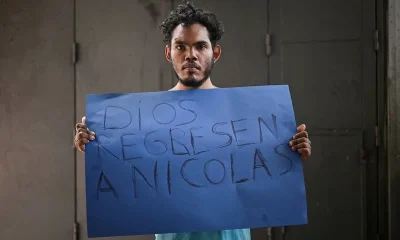International
The deadliest hurricanes in recent US history

After almost a week of having made landfall in northwest Florida as a category 4 hurricane, Helene is currently responsible for more than 200 deaths and is already the second deadliest cyclone recorded in the continental United States in the last 50 years.
Ahead of him, and with a considerable advantage, Hurricane Katrina tops the list, which with 1,392 deaths attributed is among the five most lethal tropical cyclones in the history of the United States, according to the National Hurricane Center (NHC) of this country.
These are the deadliest hurricanes that have impacted the continental United States in the last 50 years:
- Katrina (2005).- The immense hurricane Katrina hit the US coast of the Gulf of Mexico in August 2005. It made landfall first at Keating Beach, Florida, like a category 1 cyclone, and then reached Louisiana and Mississippi with category 3. The highest number of deaths was reported in the city of New Orleans (Louisiana), which recorded catastrophic floods due to the storm surge.
According to NHC records, Katrina is surpassed by the hurricane known as Great Galveston, in Texas, from 1900 and which is estimated to have claimed at least 8,000 lives, as well as Lake Okeechobee, in Florida, from 1928 and responsible for about 2,500 deaths.
- Helene (2024).- She entered through northwest Florida, in the area known as Big Bend, on the night of September 26 with category 4 on the Saffir-Simpson scale (of a maximum of 5) and from there left a tra trile of at least 800 kilometers of devastation by six states in the southeast of the United States. In North Carolina, the death toll amounts to almost a hundred, especially in the area south of the Appalachian Mountains, but the authorities do not rule out that the number will increase in the coming days.
- Ian (2022).- The powerful Hurricane Ian entered the United States through the west coast of Florida and, like Helene, did it with category 4. It left 156 deaths mainly in Florida, in addition to North Carolina and Virginia. After destroying more than 19,000 homes and buildings in Lee County, where Fort Myers is settled, Ian landed again in South Carolina.
- The “superstorm” Sandy (2012).- It produced at least 147 direct deaths and a catastrophic storm surge on the coasts of New York and New Jersey, where it made landfall at the end of October as a gigantic posttropical cyclone.
- Harvey (2017).- It produced rains of historical records in Houston, Texas, a state whose central coast facing the Gulf of Mexico it made landfall on August 25, as a category 4 hurricane. The death toll reached 103 and caused destruction in that state and in Louisiana.
Other noteworthy hurricanes are Agnes (1972), which claimed 128 lives, especially in the states of Pennsylvania, New York, Virginia and Maryland, where significant floods were recorded after the cyclone made landfall in northwest Florida as a category 1 hurricane.
Similarly, Hurricane Audrey, which made landfall in Louisiana in June 1957 with category 3, and was responsible for more than 400 deaths after registering a storm surge of up to 3.5 meters (12 feet) in areas of that state and Texas.
And finally, Hurricane Maria, category 4, which devastated Puerto Rico in September 2017 and is considered the most destructive in the recent history of the Caribbean island, which was almost entirely without electricity. Although at first 67 deaths were attributed to him, a subsequent study by George Washington University commissioned by the Government of Puerto Rico, raised the number of fatalities to 2,975.
International
Marco Rubio warns Cuba could be Trump administration’s next target

U.S. Secretary of State Marco Rubio did not rule out that Cuba’s communist government could become the next target of the Trump administration, just one day after the arrest of Venezuelan strongman Nicolás Maduro.
In an interview on Meet the Press, Rubio issued a warning to Havana, stating that Cuban authorities are “in a lot of trouble.”
“Is the Cuban government the next target of the Trump administration?” journalist Kristen Welker asked.
“Well, the Cuban government is a major problem. Yes,” Rubio replied.
“So that’s a yes?” Welker pressed.
“I think they’re in a lot of trouble, yes,” the Secretary of State added.
In a separate appearance, Rubio—who is the son of Cuban immigrants—claimed that Venezuela’s intelligence services were “full of Cubans” and said the island nation had effectively taken control of Venezuela.
“In some cases, one of the biggest challenges Venezuelans face is having to declare their independence from Cuba,” Rubio said from President Trump’s Mar-a-Lago club. “They basically tried to colonize the country from a security standpoint. So yes, if I were living in Havana and part of the government, I would at least be worried.”
During a press conference on Saturday, President Trump himself said the United States seeks to be surrounded by “good neighbors.”
“It’s very similar in the sense that we want to help the people of Cuba, but we also want to help those who are forced to leave and live in this country,” Trump said. He also described the island as a “nation in decline” that is “not doing very well right now.”
The Cuban government has not yet responded to Rubio’s remarks. However, as a staunch ally of Maduro’s regime, Cuban authorities strongly condemned recent explosions and U.S. operations in Caracas.
“All nations in the region must remain alert, as the threat looms over everyone. In Cuba, our determination to fight is firm and unbreakable. The decision is one and only one: Homeland or Death,” Cuban officials said in a statement.
International
Trump signals possible expansion of U.S. regional policy beyond Venezuela

U.S. President Donald Trump said on Saturday that Cuba could become a subject of discussion as part of a broader regional policy, highlighting the possibility that Washington may expand its focus beyond Venezuela amid rising tensions in Latin America.
The remarks suggest that the White House is considering a recalibration of its strategy toward the region, in a context shaped by recent actions and warnings related to political stability and hemispheric security.
International
World leaders react to U.S. attacks on Venezuela, sparking global divide

The following are international reactions to the U.S. attacks carried out on Saturday against Venezuela:
Chinese Ministry of Foreign Affairs
China said it was “deeply shocked” and strongly condemned the use of force by the United States against a sovereign country, as well as the use of force against the president of that nation.
“China firmly opposes this hegemonic behavior by the United States, which seriously violates international law, infringes upon Venezuela’s sovereignty, and threatens peace and security in Latin America and the Caribbean,” the ministry said. It urged Washington to comply with international law and the purposes and principles of the United Nations Charter, and to cease actions that violate the sovereignty and security of other countries.
French Foreign Minister Jean-Noël Barrot
Barrot stated that the military operation that led to the capture of Nicolás Maduro violates the principle of non-use of force, which underpins international law. He stressed that no lasting political solution can be imposed from outside and that only sovereign peoples can decide their own future.
Russian Ministry of Foreign Affairs
Russia said the United States had committed an act of armed aggression against Venezuela, describing the move as deeply troubling and condemnable.
“The pretexts used to justify such actions are unfounded,” the ministry said, adding that ideological animosity had prevailed over pragmatism and the willingness to build relations based on trust and predictability.
Moscow emphasized the need to prevent further escalation and to focus on resolving the crisis through dialogue. It reiterated that Latin America should remain a zone of peace, as declared in 2014, and that Venezuela must be guaranteed the right to determine its own destiny without external — especially military — interference.
Russia also said it supports calls by Venezuelan authorities and Latin American leaders for an urgent meeting of the United Nations Security Council.
United Nations
UN spokesman Stéphane Dujarric said Secretary-General António Guterres continues to stress the importance of full respect for international law, including the UN Charter. He added that the secretary-general is deeply concerned that international legal norms were not respected.
Government of Argentina and President Javier Milei
Argentine President Javier Milei, a close regional ally of Donald Trump, posted on X: “FREEDOM MOVES FORWARD. LONG LIVE FREEDOM, DAMN IT,” alongside a video showing him at a summit describing Maduro as a threat to the region and supporting the pressure exerted by Trump on Caracas.
In a statement, the Argentine government praised “the decision and determination shown by the President of the United States and his administration in the recent actions taken in Venezuela that led to the capture of the dictator Nicolás Maduro, leader of the Cartel of the Suns.”
Argentina said it hopes these developments represent a decisive step forward in the fight against narcoterrorism in the region.
Mexican Foreign Ministry
Mexico strongly condemned and rejected the unilateral military actions carried out in recent hours by U.S. armed forces against targets in Venezuelan territory, calling them a clear violation of Article 2 of the United Nations Charter.
The Mexican government reiterated that dialogue and negotiation are the only legitimate and effective means to resolve disputes and reaffirmed its willingness to support any effort aimed at facilitating dialogue, mediation, or accompaniment to preserve regional peace and prevent confrontation.
-

 International2 days ago
International2 days agoMissile attack hits Kharkiv homes, leaving 13 wounded
-

 International3 days ago
International3 days agoBrazil’s Bolsonaro Returns to Prison After Supreme Court Denies House Arrest
-

 International2 days ago
International2 days agoCanada’s prime minister Mark Carney to join Ukraine peace talks in Paris
-

 International4 days ago
International4 days agoRegional mexican music mourns the death of Banda Gota de Oro singer Giovanni Vera
-

 International1 day ago
International1 day agoTrump signals possible expansion of U.S. regional policy beyond Venezuela
-

 International2 days ago
International2 days agoSheinbaum evacuates National Palace after 6.5-magnitude earthquake hits Southern Mexico
-

 International1 day ago
International1 day agoWorld leaders react to U.S. attacks on Venezuela, sparking global divide
-

 International4 hours ago
International4 hours agoMarco Rubio warns Cuba could be Trump administration’s next target


























